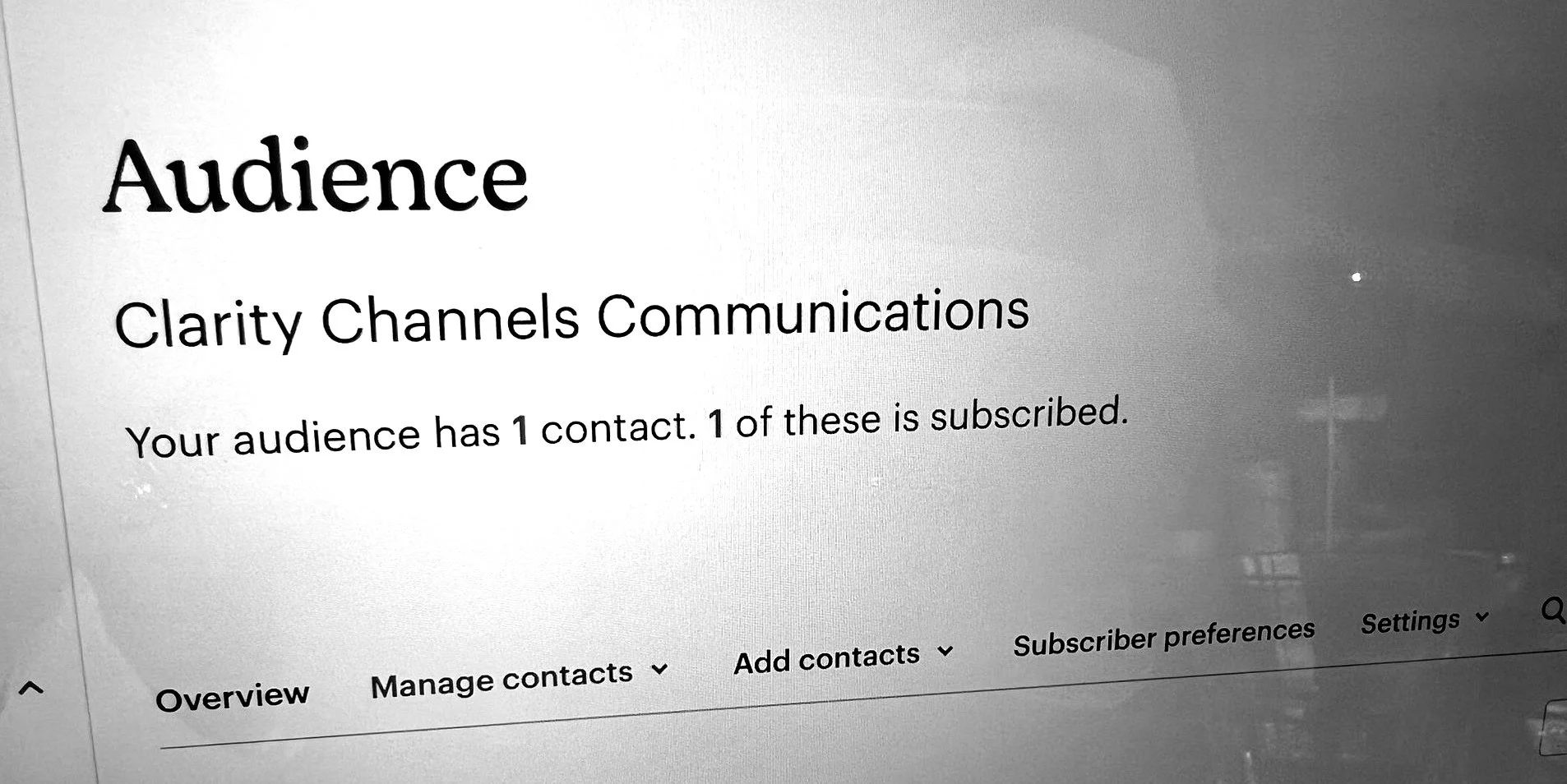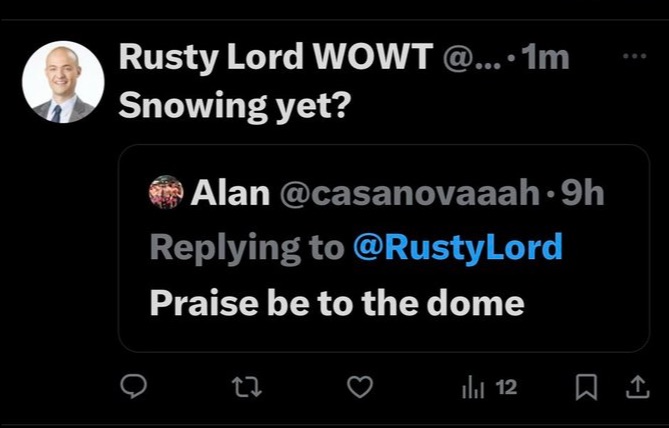Newsletter #1: The Debut
You have to start somewhere …
When I started this newsletter, I had one follower. (The one follower was me.)
The purpose of this weekly newsletter is threefold: to celebrate exemplary instances of clear communication across various mediums – be it written, spoken, or visual; to critically analyze instances where communication fell short, identifying missed opportunities; and to engage in insightful conversations with professionals in the field. The aim is to foster a deeper appreciation and understanding of effective communication in all its forms and increase clarity skillsets.
Each Monday, I’ll share some insights. Let’s see where this goes.
Reads and Seeds: Ideas to consider
In honor of today’s holiday celebrating the life and work of Dr. Martin Luther King Jr., read through his quotes that were selected to be included at his national monument in Washington, DC.
Dr. King was renowned for his clear communication due to several key factors: simplicity, eloquence, emotional resonance, relevance, and relatability.
The value of his clarity lay in its power to unite people, inspire action, and foster understanding across diverse groups. Clear communication helped him effectively spread his vision for civil rights and social justice, making complex and challenging issues more approachable and actionable for a wide audience.
A favorite: "We must come to see that the end we seek is a society at peace with itself, a society that can live with its conscience."
Montgomery, Alabama, March 25, 1965.
The Message Microscope: Rusty getting Crusty
The Background
Weather predictions are always a heated topic in January in Omaha. (The mystic Oma-Dome seems to prevent snow estimates from materializing.)
Last Monday’s forecast called for enough snow that schools proactively canceled classes … and … there wasn’t much snow. TV weather teams were catching shade.
But they got a second chance at redemption later in the week, and the snow did arrive, just like they said.
**The puns above were pure writer’s luck.**
The Message
Rusty Lord from WOWT decided to fight back against his online agitators and asked a handful of prediction doubters on X if it was “Snowing yet?”
The Microscope
The comments in his Friday morning posts are fun to read but his snarky response also highlights the balancing act public people, and organizations, need to keep in mind when deciding how to respond to criticism in public.
Unless there is a REALLY good reason — with more benefits than potential consequences — I say don’t take the bait. Here are five questions to consider before responding:
1. What is my objective? Consider why you want to engage with the taunter. Are you trying to correct misinformation, defend yourself or others, or simply vent your frustrations? Understanding your motive can help you approach the situation more strategically.
2. Will this conversation be productive? Think about whether engaging with the taunter will lead to a constructive outcome or escalate negativity.
3. How will this affect my reputation? Reflect on the potential impact of this engagement on your public image. Online confrontations can be emotionally draining and may sometimes reflect poorly on your personal or professional reputation.
4. Am I prepared to handle possible backlash? Consider the possibility of the situation escalating or attracting more negative attention. Are you ready to handle additional criticism or a potentially larger conflict?
5. Is there a more effective way to address this issue? Sometimes, responding directly to a taunter is not the most effective strategy. It's often advisable to avoid feeding naysayers, as engaging can sometimes amplify their message or encourage further negative behavior.
It looks like Rusty’s crusty responses received support from weather fans, and his responses were taken in jest.
Thanks for all of your work this last week, Rusty!
Sight Delight: Visual Perfection
How many times have you worked for weeks or months to pull off one deliverable?
This graphic from Michelle Benson with Culture of Philanthropy from London, England, illustrates all of the work that it takes to pull off … one donation, media story, event, report, connection, engagement etc.
This graphic can be a helpful tool to share with a colleague or manager to open the discussion about what it really takes to pull off an outcome.
Hat tip: Jill Russell
Clarity Rating: Scale of 1 to 5
The Clarity Rating measures effective communications on a scale of 1 to 5 using this criteria:
1: Blurry, Indistinct
2: Slightly Focused, Needs Adjustment
3: Moderately Focused, Fair Clarity
4: Well-Focused, High Clarity
5: Razor-Sharp Focus, Crystal Clear (Are we clear?)
On the Hot Seat: OPPD (Omaha Public Power District)
OPPD sent this email out to customers on Sunday afternoon when temperatures in the Omaha area dropped to -10.
This external communications receives 5 out 5 for:
Clear description of issue and consequences: “prevent the need for controlled outages.”
Specific ways to limit power to collectively help ease strain on power systems.
Clean layout with use of bullets for ease of reading.
Helpful public safety tips.
Easy to navigate resources and links.
Hello,
OPPD is asking customers to conserve energy today and for the next few days, due to cold temperatures causing an increased demand for electricity. Our teams are working around the clock to keep our system, and your home, safe and energized.
High demand can put additional strain on our system. Our customers can help by taking the following steps to reduce our peak energy load across our service territory, which also helps balance supply and demand in the energy market.
Taking these easy steps not only benefits our customers, but our neighbors, during the ongoing deep chill:
➡️ Lower your thermostat 2-4 degrees and dress warmer or use additional blankets to stay comfortable. You can reduce your energy usage by 1-3% for each degree.
➡️ Avoid Appliance Usage. Avoid using appliances like your washer, dryer or dishwasher — especially during peak usage times of 7 to 9 a.m. and 4 to 7 p.m.
➡️ Unplug items not in use. Although this won’t save a lot of energy in one home alone, it will when thousands of homes work together.
➡️ Open curtains and blinds in direct sunlight. This will increase the heat gain in a room by as much as 5-7 degrees. This can help warm up a room instead of raising the temperature on the thermostat.
➡️ Turn lights off when possible and use natural lighting instead. LED light bulbs are very efficient, but every little bit of energy reduction counts when we work together.
By taking these steps, you can help prevent the need for controlled outages. During cold weather and winter storm events it is important to prepare ahead of time for possible outages, below are some actions you can take right now.
➡️ Know where you are in relation to essential and emergency services.
➡️ Create a plan for your medical essentials and check on your neighbors that may have medical needs.
➡️ Stock up on water and nonperishable foods.
➡️ Keep your phone charged and consider alternative power sources.
➡️ Gather games and comforting items to help pass the time and stay warm.
For outage information or to report an outage please visit StormandOutage.com.Thank you for your efforts.
For more energy conservation information, visit OPPD.com/ee
Nice job, OPPD!
See you next week …
Feel free to share this newsletter with other communicators.
A very special thanks to Kellee Mikuls for her partnership and expertise in creating and launching this newsletter! Follow this pro!


